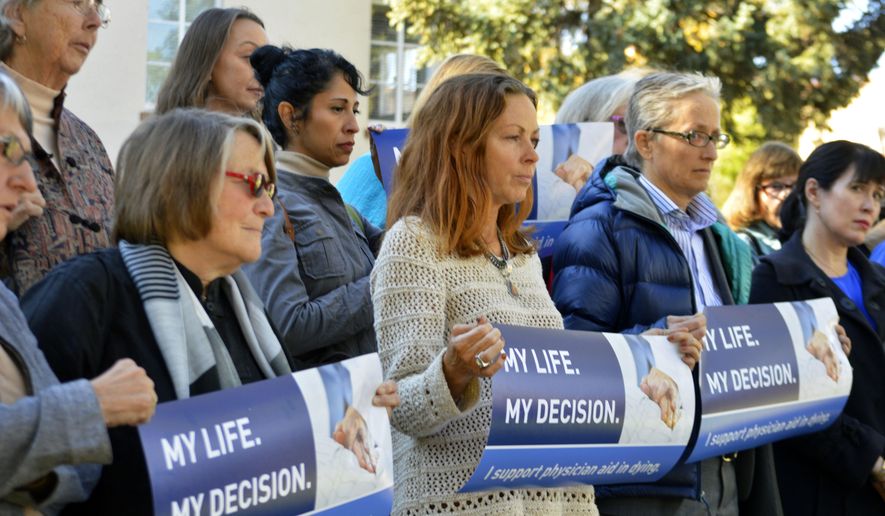OPINION:
As the D.C. Council takes up the issue of “death with dignity” this week, it is time to frame the topic correctly. Pending legislation would allow consenting doctors to help terminally ill District residents hasten the end their lives and provide another option for those who are out of options.
Advocates for “death with dignity” are hopeful that the nation’s capital will be the next jurisdiction where patients facing painful end of life decisions will have the choice to bring their suffering to an end and legally end their lives, which is the kind of advancement we need.
Americans are living longer these days, and with the growth of assisted living, hospice benefits, palliative care, memory care units, as well as life-extending health care measures, many have many more options for the last years of life.
At the same time, a quiet movement is growing within various states to address the issue of how people die, and the degree to which a person with a terminal diagnosis is permitted to exercise autonomy and self-determination with respect to the means and timing of their death, as well as the legality/morality of others assisting in hastening death, be it physicians or loved ones. Washington, D.C. is about to add its voice to the debate and the council has wisely raised the right issues and tightened the safeguards that prevent abuse,
But rather than have a “debate” over the willingness of all physicians to help those with terminal illnesses hasten death, we need to see the issue as one of empowering mentally able patients with only a six-month likely life span by adding another category of choice, as many states are doing. In fact, 17 percent of the U.S. population reside in states where such patients now have more autonomy at the end of their life as they should.
We are a nation of options. Options at the end of life are important. But for more than 250 million Americans, one option is still off the table — getting help with dying.
What we have learned from the debates within the U.S. states (six of which have passed legislation), Canada, and now the District of Columbia raise necessary questions around sensitive issues of personal freedom and independence, control, quality of life at the end of life, the cost of prolonging life, dignity in decision-making, and how to instruct others to carry out one’s wishes. Most importantly, what we have learned is that, contrary to popular belief, there is no slippery slope and that laws and regulations with safeguards regarding mental capacity, age, diagnosis and other forms of protection can prevent abuse of the “death with dignity” rules so that nobody can inflict pain or harm on others. In fact, the opposite is true. Having all options available for independent decision-making about the end of life comforts patients and leads to wise choices and freedom. Absent choice, the only options available for many are to refuse food and water, or move to one of the six states that allow death with dignity — not easy roads to travel at the end of life.
Let’s hope the council in the nation’s capital makes the right decision. Just as there should be autonomy for the District of Columbia, so should there be for the citizens that live there.
• Patrice Hirsch Feinstein is the former associate administrator of the Center for Medicare and Medicaid Services. Tara Sonenshine is former undersecretary of state for public diplomacy and public affairs.




Please read our comment policy before commenting.